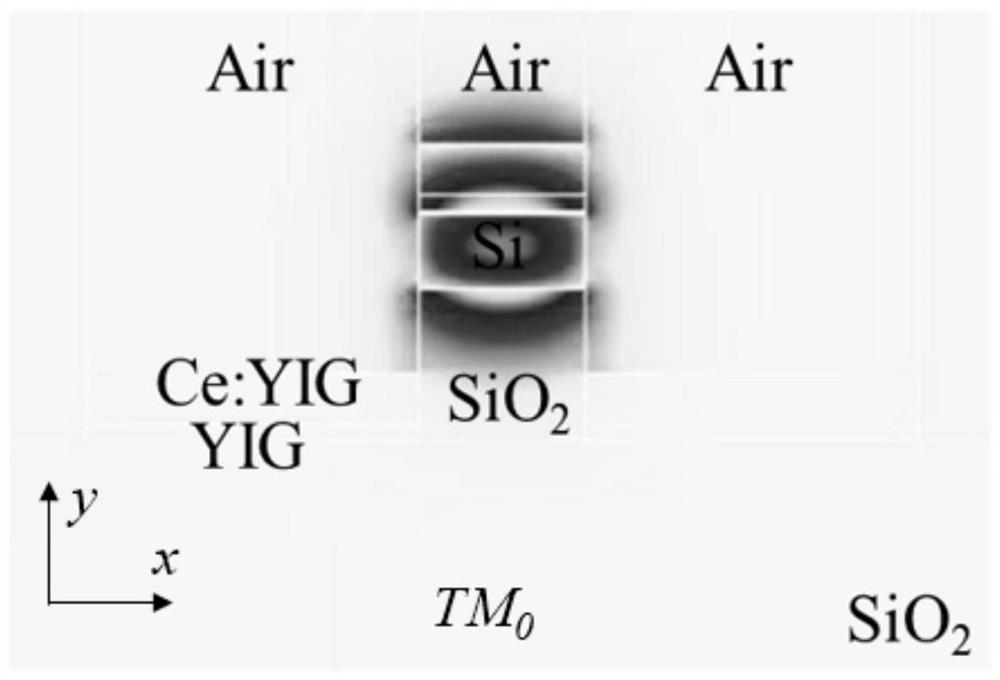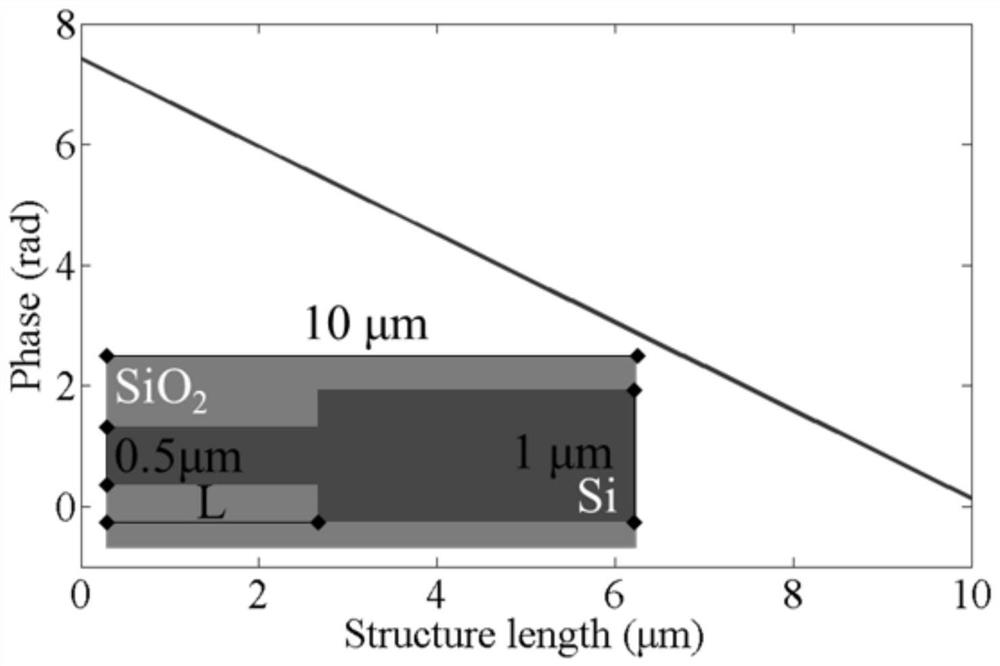Non-reciprocal optical router with planar super-lens structure based on silicon substrate integration
A non-reciprocal, super-lens technology, applied in the field of integrated optics, can solve the problems of increasing device size, modulating power consumption, increasing cascaded unit devices, and consuming modulation power, avoiding large device size, reducing overall loss, and improving Effects of connecting degrees of freedom
- Summary
- Abstract
- Description
- Claims
- Application Information
AI Technical Summary
Problems solved by technology
Method used
Image
Examples
Embodiment Construction
[0023] As mentioned in the background technology section, since the transmission between a certain port pair in a conventional integrated optical router is reciprocal at the same time, the output signal and the input signal have the same path, and the forward and reverse between multiple ports cannot be realized Non-reciprocal transmission, the transmission efficiency cannot be further improved. At the same time, this type of device expands the number of ports by cascading unit devices. As the number of ports increases, the number of required unit devices will increase sharply, thereby greatly increasing the device size and modulation power consumption.
[0024] The non-reciprocal optical router with a planar metalens structure based on silicon-based integration proposed by the present invention can realize multiplex working status, improve transmission efficiency, and break the optical routing network construction method of cascading unit devices at the same time, avoiding the...
PUM
 Login to View More
Login to View More Abstract
Description
Claims
Application Information
 Login to View More
Login to View More - R&D
- Intellectual Property
- Life Sciences
- Materials
- Tech Scout
- Unparalleled Data Quality
- Higher Quality Content
- 60% Fewer Hallucinations
Browse by: Latest US Patents, China's latest patents, Technical Efficacy Thesaurus, Application Domain, Technology Topic, Popular Technical Reports.
© 2025 PatSnap. All rights reserved.Legal|Privacy policy|Modern Slavery Act Transparency Statement|Sitemap|About US| Contact US: help@patsnap.com



